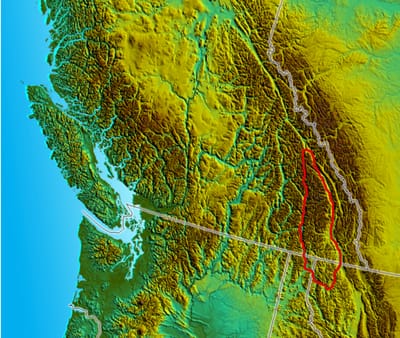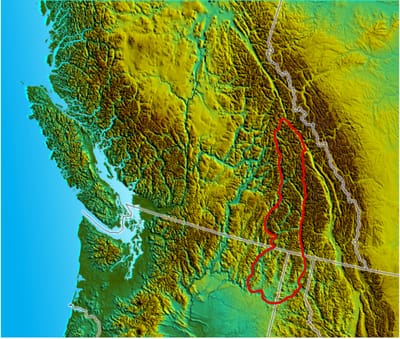about the valley


The Shadow Hollow Valley is found within the Purcell Mountain Range (first image to the left and above) with the Selkirk Mountains to our west (second image below). The Purcell Mountain Range have the Rocky Mountain Trench to the east. The Purcells are a subrange of the Columbia Mountains, which includes the Selkirk, Monashee, and Cariboo Mountains. They are located on the west side of the Rocky Mountain Trench in the area of the Columbia Valley, and on the east side of the valley of Kootenay Lake and the Duncan River.
To the north, in Canada the only large settlement in the mountains is the Panorama Ski Resort and Kicking Horse Resort, though there are small settlements, such as Yahkand Moyie along the Crowsnest Highway, and residential rural areas dependent on the cities of Creston, Kimberley and Cranbrook, which are located adjacent to the range.
The Purcells are shown in the United States (on some maps) as the Percell Mountains, where their southern limit protrudes into the states of Idaho and Montana, abutting Lake Koocanusa, a reservoir on the Kootenai River. American geographic classifications consider the Percells to be part of the Rocky Mountains but in Canada that terminology is reserved for ranges on the east side of the Rocky Mountain Trench. In the Purcell Mountains, most of the peaks are near or above 10,000 feet in elevation.
The Purcells were formed in the Proterozoic eon (in the Precambrian period), which spans from 2,500 million years ago to about 540 million years ago.
The Selkirk Mountains are a mountain range spanning the northern portion of the Idaho Panhandle, eastern Washington, and southeastern British Columbia. They begin at Mica Peak near Spokaneand extend approximately 320 km north (200 miles) from the border to Kinbasket Lake, at the now-inundated location of the onetime fur company post Boat Encampment. The range is bounded on its west, northeast and at its northern extremity by the Columbia River, or the reservoir lakes now filling most of that river's course. From the Columbia's confluence with the Beaver River, they are bounded on their east by the Purcell Trench, which contains the Beaver River, Duncan River, Duncan Lake, Kootenay Lake and the Kootenay River.
The Selkirks are distinct from, and geologically older than, the Rocky Mountains. Together with the neighboring Monashee and Purcell Mountains, and sometimes including the Cariboo Mountains to the northwest, the Selkirks are part of a larger grouping known as the Columbia Mountains. A scenic highway loop, the International Selkirk Loop, encircles the southern portions of the mountain range.
The Selkirks were named after Thomas Douglas, 5th Earl of Selkirk